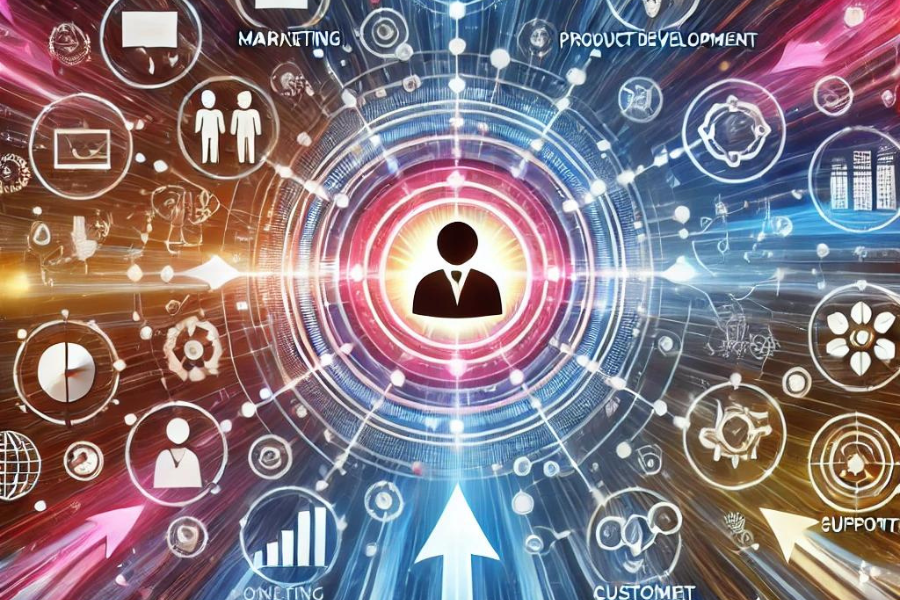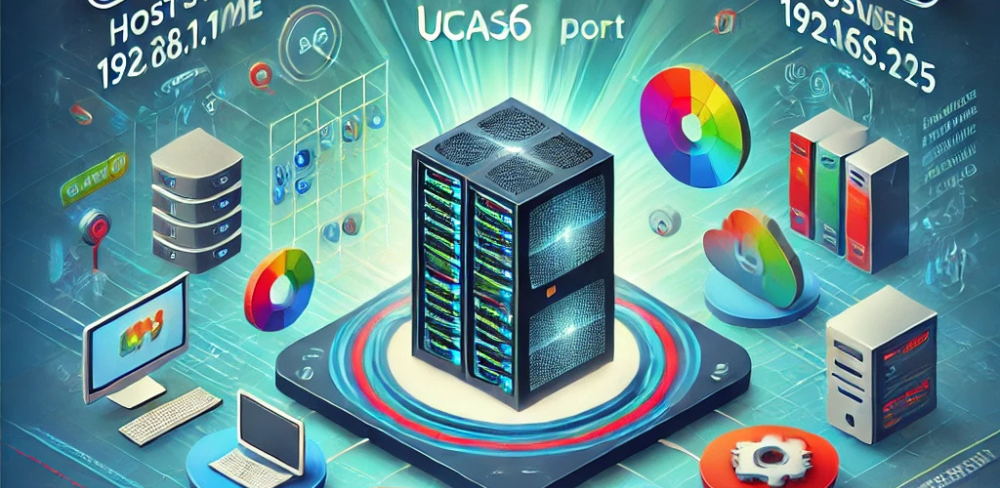Introduction: What is kpcentricity and Why It Matters in Business Today
Now that competition is so fierce and customers have more choices than ever before, kpcentricity has become paramount to success in 21st century business. So what does kpcentricity mean and how can it help you with your business strategy? At Kpcentricity, we define KP as a business philosophy, where the Customer (K) is to be kept at the center and which extends its reach beyond traditional CRM. By concentrating on customer experience and customer needs, organizations can generate more value for their customers, keep them loyal for longer periods, which will ultimately lead to growth.
- Main Points: Kpcentricity is putting the customer at the heart of your business. Adopting customer-centered strategies can raise satisfaction and loyalty levels among customers. In this piece, we delve more into the depths of kpcentricity and offer actionable strategies on how you can take up that approach to your business.
1. The Foundations of kpcentricity: Understanding Customer-Centricity
Kpcentricity is based on the concept that everything a business does must start and end with delivering value to the customer. Every choice, from the development of a product to creating strategies, should best serve customers.
KPCore:
- Customer Understanding: Creating a full understanding of what customers need, want, and how they behave.
- Customized: Products and services developed with the needs of a limited number of customers in mind.
- CX (Customer Experience): Making sure every contact with your company is smooth and pleasant.
- Customer Feedback: Proactively sourcing and incorporating customer feedback to serve the product better.
Insight:
- 86% of consumers are willing to pay a premium for an improved customer experience.
- A business that makes customer experience its number one priority sees a profitability index of 60% against someone who does not.
However, fostering a culture of kpcentricity will ensure that businesses can grow and form enduring relationships with customers, making them better placed than their peers in the market.
2. Implementing kpcentricity in Your Business Strategy
Meltdown does it from the inside out, bringing your market to fruition with a fiery clarity of kpcentricity, which is no small thing, and we’ll explain exactly what integrating this into business strategy looks like. This does not involve small tweaks; it is a major change in your business model.
Dissecting some Steps to Implement kpcentricity:
- Customer Segmentation: Now that you have identified and know about your region details, try to categorize it as per demographics, behavior, and needs. Use customer personas to develop a strategy, identify different segments, and create their persona.
- Journey Mapping: From the first encounter through post-purchase, go through and explore areas where it gets difficult to use or needs improvement so that the experience in general can be better.
- Alignment: Make sure that all departments (sales, customer service…) work toward the same vision. Engage in open communication and cooperation to resolve customer issues efficiently.
- Technology: Integrated CRM systems, data analytics, and AI tools to understand customer behavior. Harness these insights to engage on an individual level and deliver superior customer experiences.
Customer Success: Increased conversion rate up to 30% and customer retention by more than 20%.
Kpcentricity will embed the kpcentric approach in your business strategy—making it easier to turn, faster to steer, and more reactive when you start pushing on one end once implemented systematically.
3. The Role of Technology in Enhancing kpcentricity
Technology is the key enabler and driver for businesses to sow their envisaged kpcentricity. Tools from data analytics to CRM systems provide meaningful insights and optimize customer-centric processes.
Key Technologies Behind kpcentricity:
- Customer Relationship Management (CRM): CRM systems manage leads, customer interactions, and reveal data of interest. For example, Salesforce or HubSpot can centralize customer data, allowing all departments to access it.
- Data Analytics: Data analytics tools allow businesses to analyze customer data, identify trends, and predict future behavior. For instance, using Google Analytics or Tableau, you might infer patterns in customer preferences and pain points.
- AI and Machine Learning: Automating personalized marketing campaigns, customer support, and product recommendations through AI/ML. For example, AI-based chatbots can offer 24/7 customer support, facilitating a better UX.
Data:
- 70% of customers expect a company’s website to offer a self-service application.
- Increased use of AI to drive better customer experiences has led to a 25% rise in consumer satisfaction.
In an age of kpcentricity, businesses must ensure that they can deliver exceptional customer experiences to remain competitive.
4. Measuring the Success of kpcentricity Initiatives
You should measure the impact of your kpcentricity initiatives to ensure they are yielding results that align with and improve the right metrics. By tracking them over time, you can observe the effects of your customer-centric strategies and identify areas for improvement.
Key Metrics to Monitor:
- Customer Satisfaction (CSAT): CSAT scores indicate how satisfied your customers are with your goods, services, or experiences. Surveys are the most common method for gathering this data.
- Net Promoter Score (NPS): NPS gauges the probability that your customers will refer others to your brand. A high NPS represents excellent customer loyalty.
- Customer Lifetime Value (CLTV): CLTV measures the total revenue a customer is expected to generate from their first purchase until the end of their relationship with your company. Focusing on kpcentricity often leads to a higher average CLTV.
- Churn Rate: The percentage of customers or subscribers who stop using your product over a defined period. Kpcentricity strategies that decrease churn indicate success.
Table:
| Metric | Description | Importance |
| CSAT | Measures customer satisfaction | Directly linked to customer loyalty |
| NPS | Gauges customer loyalty | Predicts future growth |
| CLTV | Estimates long-term customer value | Guides marketing and retention strategies |
| Churn Rate | Tracks customer attrition | Indicates areas for improvement |
By regularly analyzing these metrics, you can refine your kpcentricity efforts and continue to meet customer expectations effectively.
5. Overcoming Challenges in Adopting kpcentricity
This may come with some challenges, however, as much of what makes kpcentricity beneficial is having developed a new culture among the business. Solving these challenges needs careful thought and consideration for successful implementation.
Typical Challenges:
- Organizational Pushback: It is common for staff, used to working in the traditional model of Excel sheets and solution-focused product initiatives, to resist a switch to a customer-centric culture.
- Solution: Create a kpcentric culture by teaching your employees why it is good for everyone and making them part of the transition process.
- Data Silos: Data silos happen when a customer’s data is spread across different departmental systems, leading to inconsistent experiences for the same consumer.
- Solution: Implement integrated systems that enable the seamless flow of data and collaboration across departments.
- Resource Constraints: Smaller businesses may find it difficult to dedicate the resources needed for kpcentricity initiatives.
- Solution: Focus on the highest ROI initiatives and expand from there.
- Return on Investment Measurement: It is difficult to measure the monetary value of your kpcentricity efforts.
- Solution: Follow the key metrics discussed to measure progress and prove that customer-centrism really works in your company.
Quote: “Becoming customer-centric is like any other journey; you never really arrive, but rather continue to refine and change your target.” – Customer Experience Expert.
With this foresight, businesses can plan ahead for these challenges and ultimately prepare themselves to overcome them if they pursue a kpcentricity model.
6. The Future of kpcentricity: Trends and Innovations
That being said, as businesses grow, kpcentricity becomes even more complex. Keeping up with the latest trends and technology requires an investment in innovation!
Top Trends:
- More AI, Less Automation; Hyper-Personalization: With AI and data analytics fueling personalization, businesses can scale their way to more tailored experiences. This goes deeper than simple personalization to predict customers’ needs in real-time.
- Omnichannel Experiences: Excellent omnichannel experiences, from online to in-store interactions, are what customers now expect. The future of kpcentricity will require integration across these channels to deliver a coherent customer journey.
- Sustainability and Social Responsibility: The newest trends are in sustainable, environmentally friendly products with significant social responsibility. Sustainability and social responsibility will, therefore, be prominent in kpcentricity.
Facts:
- 73% believe a company’s efforts to protect the environment weigh in on their purchasing decisions.
- More than half (58%) of consumers agree they would pay more for products from companies committed to positive social impact.
As kpcentricity continues to move toward the future of work, businesses that identify with these trends will emerge as leaders in catering to the modern consumer.
Conclusion: Embrace kpcentricity for Long-Term Success
In the new world of business, where competition is the order of the day, kp-centricity can become a huge differentiator. Bringing the customer to the core of your strategy will allow you to better connect with them, gain brand loyalty, and grow as a sustainable business.
You might want to contemplate how kpcentricity.com would work within your business paradigms and behaviors. So, what have you done recently to be more customer-focused? How can technology improve your customer experience?
For more insights into creating a customer-focused business, visit this article on Jessica Ditzel, where you’ll find valuable tips and resources.





One thought on “Unlocking the Power of kpcentricity: A Comprehensive Guide to Customer-Centric Strategies”